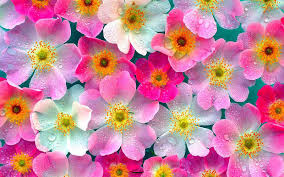Epilepsy in Brief
What is Epilepsy
- Epilepsy is a very common neurological disorder.
- It affects 65 million globally and over 10 million in India.
- 1 out of 10 people will have a seizure once in their lifetime.
- This is a disorder of the central nervous system- in particular of the brain (CNS) and is characterised by recurrent unprovoked seizures.
- This can occur at any age although incidence is higher in children below 5 yrs or adults older than 55 yrs of age.
- It is not contagious.
- Sudden Unexplained Death in Epilepsy (SUDEP) is not frequent but each year 1 out of a 1000 epilepsy patients do succumb to it.
- There are many different causes for Epilepsy, which vary by age.
- 70% of people with epilepsy can lead a normal life with a combination of medicines.
- Epilepsy should not be a limiting factor and many persons with epilepsy have achieved success in the fields of work, art & sport.
What is a Seizure
- Seizure is a sudden & intense surge of electrical activity in the brain, which can be explained as kind of “electrical storm” in the brain.
- Seizures are not a disease but a symptom of abnormal functioning of the brain.
- During a seizure a person may experience stereotyped alteration in behaviour, consciousness, movement, perception and/or sensation.
- Some seizures can hardly be noticed, while others totally disable the person.
- Seizures are commonly brief, lasting from seconds to minutes, and are often followed by a period of drowsiness and confusion.
- Seizures are also commonly called fits, spells, attacks or blackouts.
Types of Seizures
- Seizure are commonly divided into 2 groups – Generalised Seizures and Partial Seizures.
- Generalised Seizures –
- Generalized Seizures begin with a widespread electrical activity that involves both hemispheres of the brain at once.
- In Generalised Seizures person’s awareness of his surroundings is impaired.
- Generalised Seizures can be convulsive or non-convulsive.
- In Generalised Seizures there is no aura or warning beforehand.
- Partial or focal Seizures –
- Partial seizures begin with an electrical activity in one limited area of the brain.
- Symptoms of a partial seizure depend on the area of the brain involved.
- Partial seizures may be – associated with loss of awareness and bizarre behaviour or the person who has it may be able to describe the complete event.
Diagnosis of Epilepsy
- The diagnosis of epilepsy is essentially clinical and rests on the description of the seizure provided by the patient and an eye-witness.
- The doctor’s diagnosis is based on a thorough evaluation of the seizure, family history, physical & neurological examination, routine blood tests, clinical tests of the brain function and structure.
- The report of the eye-witness is of great importance, especially if there is any impairment of consciousness during the seizure. A video taken at the time of the seizure (using a mobile phone or a camera) can be extremely helpful in diagnosis.
- Brain Function is tested via EEG (Electroencephalography) wherein the electrical activity of the brain is recorded by using electrodes placed on the scalp and is displayed on the computer monitor by using specialised software.
- Brain Structure is tested using CT Scan (Computerised Tomography Scan) and MRI (Magnetic Resonance Imaging). These produce images of the brain that can determine any structural abnormalities e.g. brain injuries, tumors, scar tissues, shrinkage of brain (atrophy) etc.
- SPECT (Single Photon Emission Computerised Tomography) measures blood flow through different parts of the brain.
- PET (Positron Emission Tomography) shows how various areas of the brain use glucose or oxygen. This test is useful to identify the seizure focus in partial epilepsy.
- MEG (Magnetoencephalography) measures tiny magnetic fields to study the brain’s electrical patterns with less interference from the skull and other tissues than on an EEG.
Treatment of Epilepsy
- Anti-Epilepsy Drugs (AEDs) –
- AEDs are the most common way of treating epilepsy and almost always the first treatment tried.
- Different medicines help with different kinds of epilepsy and seizures. They may be prescribed alone (monotherapy) or in combination.
- In about 7 out of 10 people, seizures get controlled with AEDs.
- Seizure medicines needs to be taken strictly as per doctor’s prescription.
- After a seizure-free period of 2 to 3 years the doctor might consider tapering the dosage and discontinuing seizure medicines.
- Surgery –
- People with partial epilepsy who have not responded to treatment with 2 medications taken in a good dose could be considered for surgery.
- At least two single drugs and a combination of two or more drugs should be tried before surgery is considered. The chances that the third drug will cure the seizures are less than 5%.
- Epilepsy surgery can prove beneficial to those who have seizures associated with structural brain problems e.g. benign brain tumors, congenital strokes, traumatic brain injury or malformations of blood vessels.
- Studies have shown that surgical outcome is better with an earlier intervention.
- Devices –
- Vagus Nerve Stimulation (VNS Therapy)
- Responsive Neurostimulation (RNS)
- Deep brain stimulation (DBS)
- External Trigeminal Nerve Stimulation (eTNS)
- These should be done only when an EXPERT LEVEL II epilepsy center has ruled out lesional epilepsy which can be cured by resection. As these are palliative procedures, expensive and do not yield better than 30 % results.
- Dietary Therapies – Ketogenic Diet, Modified Atkins Diet and Low Glycemic Index Diet are used for controlling seizures in non-surgical persons with epilepsy. This must be administered under vigilant medical supervision.
Living with Epilepsy
-
- Historically, epilepsy has been neglected, feared, and misunderstood. A veil of secrecy surrounding the disease has resulted in myths, superstitions, and a general lack of knowledge.
- People with epilepsy can be targets of prejudice. The stigma of the disorder discourages people from seeking treatment for symptoms and becoming identified with the disorder.
- The stigma associated with epilepsy makes the affected persons and their families hide the disorder and avoid treatment.
- Many superstitions & myths continue to be attached to epilepsy even in these modern times.
- Persons with epilepsy face a lot of discrimination and harassment, whether it is for education, employment or marriage. This is mostly due to wrong superstitions, stigma which is misplaced, and lack of knowledge.
- With proper treatment and support people with epilepsy can lead a normal life – get education, work, marry and have children.
- Patient support groups make a difference for improving the quality of life in persons with epilepsy.



